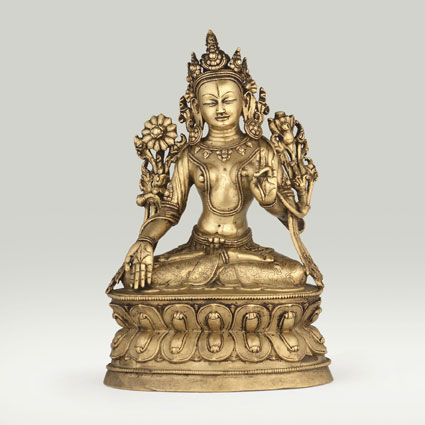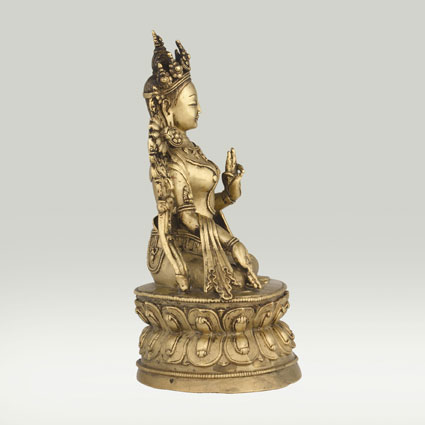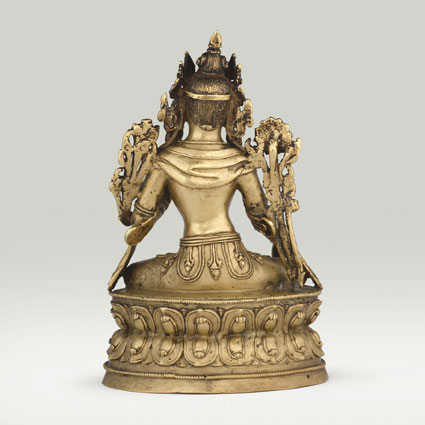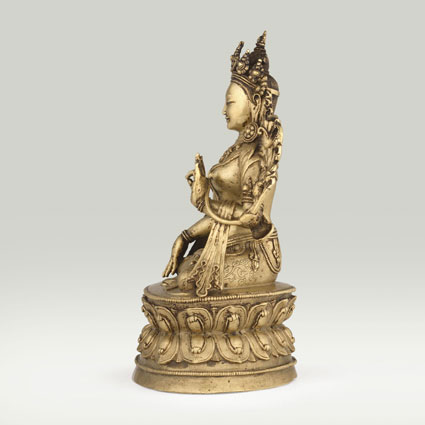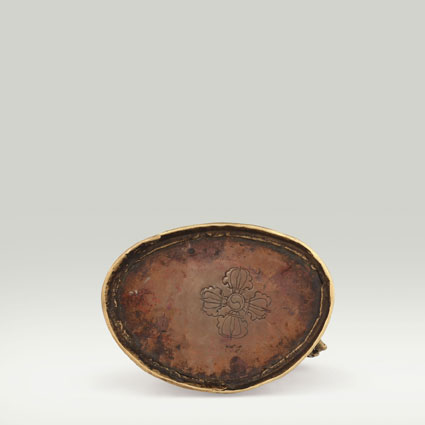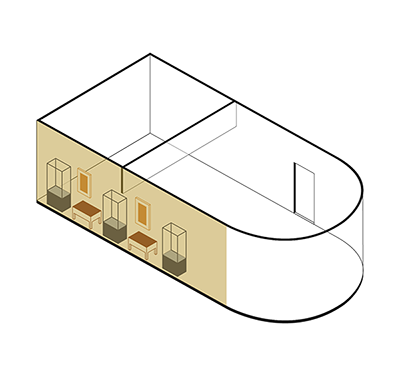ABS 244
Code: ABS 244
Country: Tibet
Style:
Date: 1400 - 1500
Dimensions in cm WxHxD: 11.5 x 17.7 x 8.5
Materials: Brass; eyes inlaid with silver, lips with copper
Sita Tara - the White Tara is seated in the diamond attitude (vajraparyankasana) on a double lotus pedestal. Sita Tara is characterized by the additional five eyes on the forehead, on both hands and the soles of the feet. Her right hand forms the mudra of gift-bestowal (varada-mudra), and with her left hand she shows the mudra of refuge-granting (sharanagamana-mudra).The three raised fingers of her left hand represent the three jewels: Buddha, Dharma and Sangha. Water lilies blossom above her shoulders. She is one with her mantra: OM TA RE TU TARE TURE SOHA. Lay people can call upon her for help in times of need by simply uttering her name with devotion.
Tara is a boddhisattva who, according to tradition, vowed to manifest as a female until all beings are liberated from samsara. The devotion for Tara was popularised in Tibet by the Indian scholar Atisha (982-1054) from Vikramashila Monastery, who taught in Tibet from 1045 until his death.
Tara is a generic name for an Indian deity described in Tibetan Buddhism under 21 different forms, each with a different appearance and function, and the Green Tara (literally the “dark Tara”) is the source of all of them. She is the consort of the Buddha Amoghasiddhi and belongs thus to family of activity, but she can also be attributed to Buddha Amitabha and therefor to the lotus family.
This Tibetan statue of Tara bears many similarities with works produced in the Chinese imperial workshops of the early Ming emperors at Beijing, in particular during the Yongle (1403-1424) Xuande period (1426-1435). It has to be emphasised that the styles of Tibeto-Chinese sculptures of the Yongle period were influenced by contemporary Nepalese and Tibetan prototypes - and not the other way around as proposed by some writers.
Tara is a boddhisattva who, according to tradition, vowed to manifest as a female until all beings are liberated from samsara. The devotion for Tara was popularised in Tibet by the Indian scholar Atisha (982-1054) from Vikramashila Monastery, who taught in Tibet from 1045 until his death.
Tara is a generic name for an Indian deity described in Tibetan Buddhism under 21 different forms, each with a different appearance and function, and the Green Tara (literally the “dark Tara”) is the source of all of them. She is the consort of the Buddha Amoghasiddhi and belongs thus to family of activity, but she can also be attributed to Buddha Amitabha and therefor to the lotus family.
This Tibetan statue of Tara bears many similarities with works produced in the Chinese imperial workshops of the early Ming emperors at Beijing, in particular during the Yongle (1403-1424) Xuande period (1426-1435). It has to be emphasised that the styles of Tibeto-Chinese sculptures of the Yongle period were influenced by contemporary Nepalese and Tibetan prototypes - and not the other way around as proposed by some writers.

